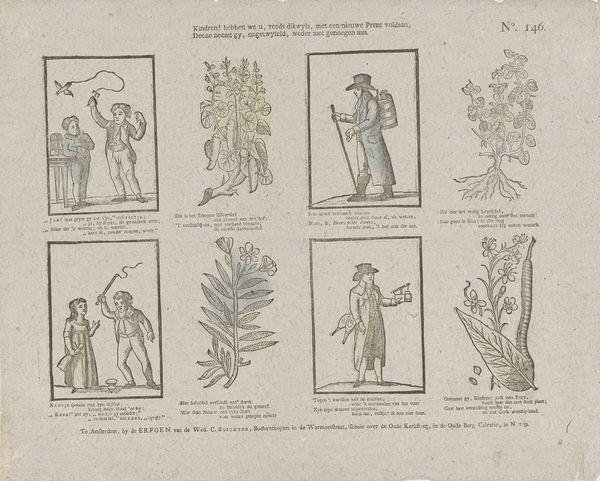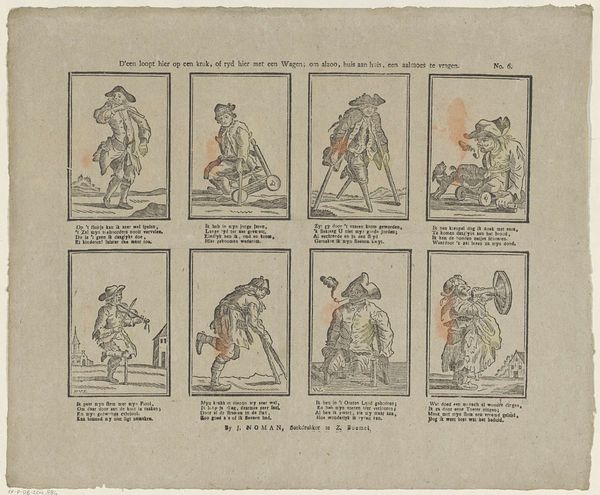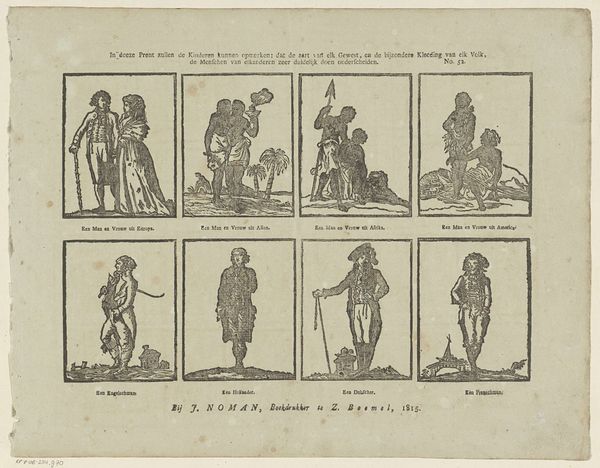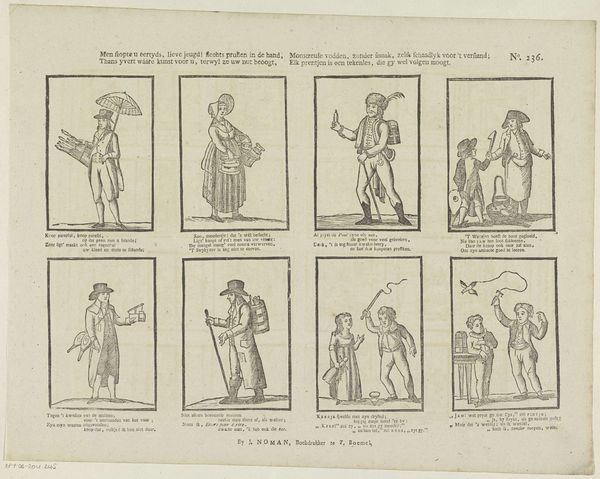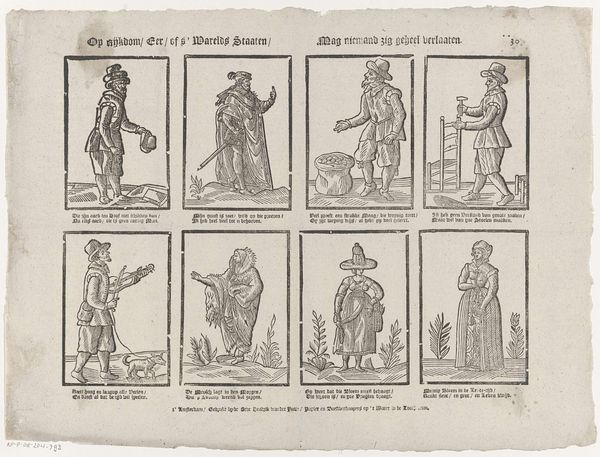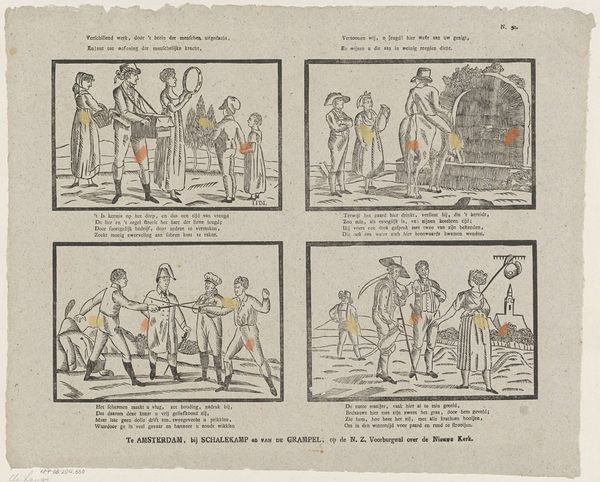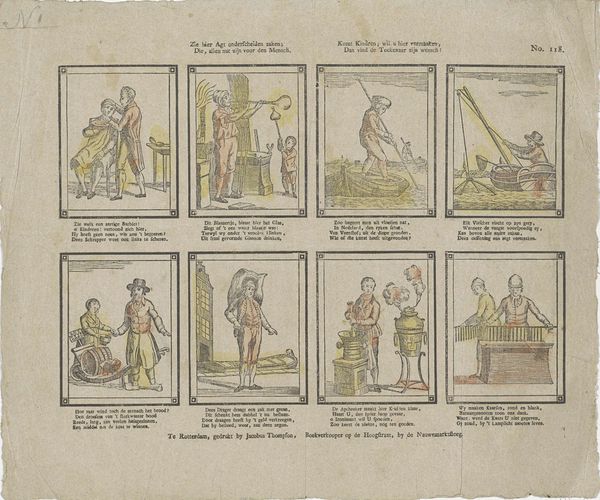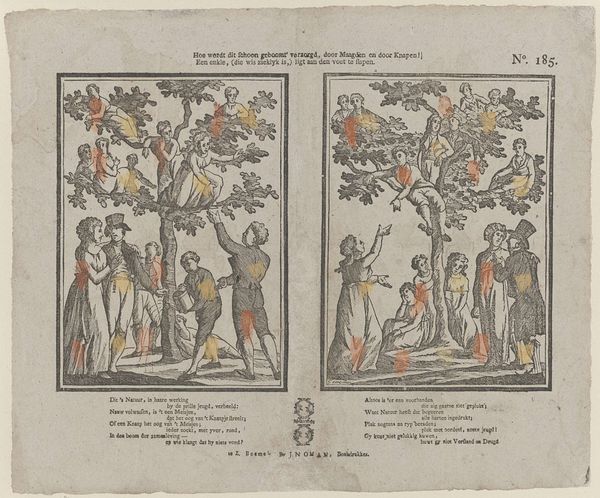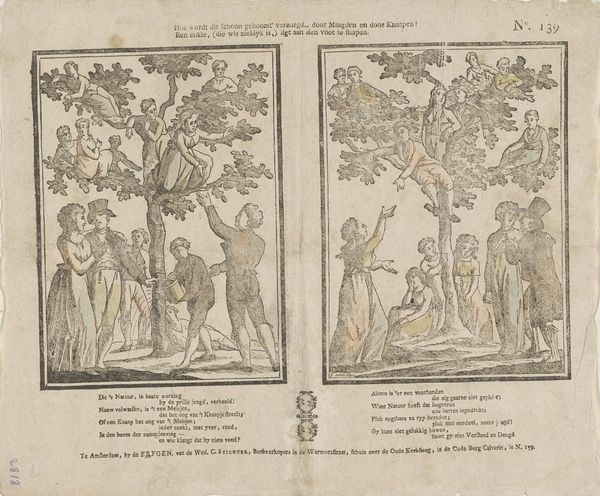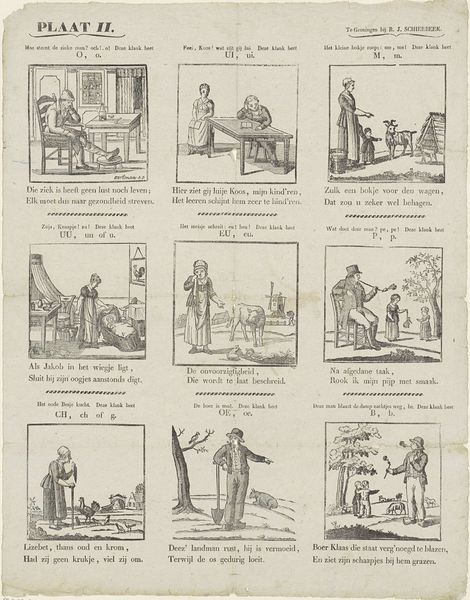
Men stopte u eertyds, lieve jeugd! slechts prullen in de hand, / Thans yvert wààre kunst voor u, terwyl ze uw nut beoogt, / Monstreuse vodden, zonder smaak, zelfs schaadlyk voor 't verstand; / Elk prentjen is een tekenles, die gy wel volgen moogt 1715 - 1813
0:00
0:00
print, etching, engraving
#
dutch-golden-age
# print
#
etching
#
genre-painting
#
engraving
Dimensions: height 323 mm, width 403 mm
Copyright: Rijks Museum: Open Domain
Curator: "Men stopte u eertyds, lieve jeugd! slechts prullen in de hand, / Thans yvert wâare kunst voor u, terwyl ze uw nut beoogt, / Monstreuse vodden, zonder smaak, zelfs schaadlyk voor 't verstand; / Elk prentjen is een tekenles, die gy wel volgen moogt," a print made by the heirs of widow Cornelis Stichter, sometime between 1715 and 1813. It’s got a rather quaint, didactic air about it. I'm curious, what jumps out at you when you see this print? Editor: Well, first I'm struck by its didactic nature. The inscription tells me it once held popular appeal, because each scene seems intent on teaching. But how might we see that as an activist statement? Curator: I think this piece speaks volumes about the social role of art during the Dutch Golden Age and beyond, doesn't it? It attempts to impose certain morals onto children from different social classes. What's really intriguing to me is the commercial aspect – these prints were a commodity, meant to be bought and consumed, subtly shaping young minds according to societal expectations and offering moral lessons at the same time. Look at the detailed compositions: Do you notice a common thread in all of them, regarding the values or ideals being presented? Editor: Yes, I do. There is attention to what seem to be class distinctions through a set of binary oppositions in relation to children’s lives: commerce vs moral development. It's pretty amazing to see this level of social engineering through art from so long ago! The work gives so much for thinking through art and social change. Curator: Indeed. It’s a stark reminder that art has always been embedded within complex social structures, playing an active role in shaping beliefs and behaviours across generations.
Comments
No comments
Be the first to comment and join the conversation on the ultimate creative platform.
